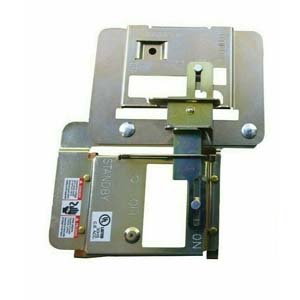RustyShacklefo
Member
Depending upon your AHJ, this may or may not pass inspection. The main issue is that if the cover of the load center is removed, the interlock is also removed, so the generator and main breakers can be simultaneously "on".You can get a generator interlock kit and power connector for under $100 in parts.
I haven't watched all of this video, but there are many on the subject.
I was surprised to recently learn that for my Siemens panel, there is an option simpler/cheaper than a transfer switch, but which doesn't suffer this problem. It interlocks the main and generator breakers, but it connects directly to them so that it's functional even when the load center's cover is removed. And it's easier to install - just snaps right on - no hole drilling like the aftermarket ones. It's not much more expensive either, though I had to look around a bit to find one with prompt delivery.

Siemens ECSBPK10 Standby Mechanical Interlock Kit
Siemens ECSBPK10 Standby Mechanical Interlock Kit for sale at Scott Electric in Greensburg, PA, Item Number: 374005
www.scottelectricusa.com



